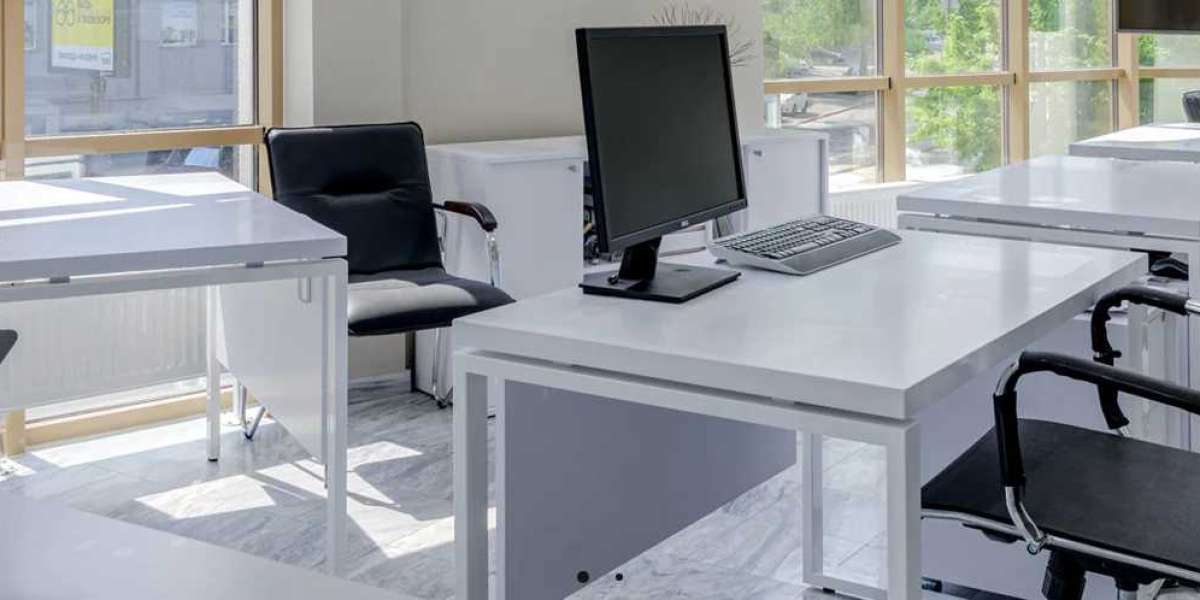Finding the right ergonomic office chair is crucial for maintaining comfort, productivity, and overall well-being during long hours at your desk. An ergonomic chair can prevent back pain, improve posture, and boost your focus. Here’s a comprehensive guide on how to choose the best ergonomic office chair for your workspace:
1. Understand Ergonomics
Ergonomics refers to the design and arrangement of objects for efficient and safe interaction. An ergonomic office chair is designed to support your body’s natural posture and reduce strain on muscles and joints. Look for chairs with adjustable features that allow you to customize your seating position for maximum comfort and support.
2. Check for Lumbar Support
Lumbar support is essential for maintaining the natural curve of your spine, especially during extended sitting. A good ergonomic chair will provide:
- Adjustable lumbar support: Ensures the support aligns with the curve of your lower back.
- Built-in lumbar support: For chairs that don’t offer adjustability, make sure the lumbar support is contoured to support the lower back naturally.
3. Seat Height Adjustability
The seat height should be adjustable to match your height and desk setup. Proper seat height helps keep your feet flat on the ground and your knees at a 90-degree angle, reducing strain on your lower body.
Ideal seat height features include:
- Pneumatic height adjustment
- A range that accommodates different users
4. Seat Depth and Width
A chair with adjustable seat depth allows you to position yourself so that there is a 2-3 inch gap between the back of your knees and the seat’s edge, ensuring better leg circulation. The seat width should be wide enough to accommodate your body comfortably, but not so wide that you can’t rest your arms naturally.
Look for:
- Seat slider adjustments for proper depth
- Adequate seat width for comfort
5. Adjustable Armrests
Armrests help reduce tension in your shoulders and upper back, but they need to be adjustable to ensure they don’t interfere with your movement or typing position. Ideally, armrests should be:
- Height adjustable: To support your arms at a 90-degree angle.
- Width adjustable: To ensure they aren’t too close or too far from your body.
- Padded: For added comfort and reduced pressure on your elbows.
6. Recline and Tilt Lock Features
The ability to recline and tilt your chair is essential for dynamic sitting, which encourages movement and reduces pressure on your spine. Chairs with tilt mechanisms and recline functions allow you to lean back for short breaks, improving blood circulation and relieving pressure from your back.
Look for:
- Tilt tension adjustment: Controls the ease of reclining.
- Tilt lock: Locks the chair in place at different recline angles.
- Synchro-tilt mechanism: This tilts the backrest and seat in tandem for a balanced recline.
7. Breathable Material
The chair material can make a big difference in comfort, especially during long workdays. Breathable materials like mesh promote airflow and keep you cool, while padded fabric or leather seats offer a softer, more cushioned feel. Choose the material that best fits your personal comfort preference and climate.
Popular materials include:
- Mesh: Breathable, ideal for warm environments.
- Fabric: Soft and durable, offering good comfort.
- Leather or Faux Leather: Sleek, professional, and easy to clean.
8. Headrest for Neck Support
If you often lean back while working or during breaks, a headrest can offer critical support for your neck and shoulders. Some chairs come with adjustable headrests that move up and down or tilt for customized comfort.
Benefits of headrests:
- Relieves neck strain during breaks or when reclining.
- Provides extra support for tall users.
9. Swivel Base and Casters
A swivel base allows you to rotate and reach different areas of your desk without straining. Casters provide mobility, making it easy to move your chair around your workspace. Make sure the wheels are appropriate for your flooring type (hardwood, carpet, etc.).
Key features include:
- 360-degree swivel: Ensures easy movement.
- Durable casters: Choose wheels designed for your flooring (e.g., rubber casters for hardwood floors).
10. Adjustability for Personalization
Every individual’s body is different, and what works for one person may not work for another. That’s why adjustability is key when selecting an ergonomic office chair. The more adjustable features a chair has, the more you can tailor it to your specific needs.
Adjustable features to prioritize:
- Seat height
- Seat depth
- Armrest height and width
- Lumbar support
- Tilt and recline
11. Consider Your Budget
Ergonomic office chairs come in a wide range of prices, from budget-friendly options to high-end models. While premium chairs offer more features and durability, you can still find good ergonomic chairs at affordable prices. Make sure to set a budget but prioritize essential ergonomic features over aesthetics or extra add-ons.
Budget options:
- Under $150: Basic adjustments, ideal for short-term use.
- $150 - $300: Offers better ergonomics and comfort for daily use.
- $300+: Premium chairs with full adjustability and high-quality materials.
12. Test Before You Buy
Whenever possible, test an office chair before purchasing it. Sitting in the chair for a few minutes will help you understand how comfortable and supportive it feels. If you’re shopping online, check return policies to ensure you can return the chair if it doesn’t meet your comfort needs.
Conclusion
Choosing the best ergonomic office chair for your workspace involves understanding key features like lumbar support, seat height, armrest adjustability, and material quality. By focusing on these elements and finding a chair that fits your specific needs and budget, you can create a more comfortable and supportive workspace that promotes better health and productivity.
Investing in a high-quality ergonomic chair is one of the best decisions you can make for your long-term well-being and efficiency.








